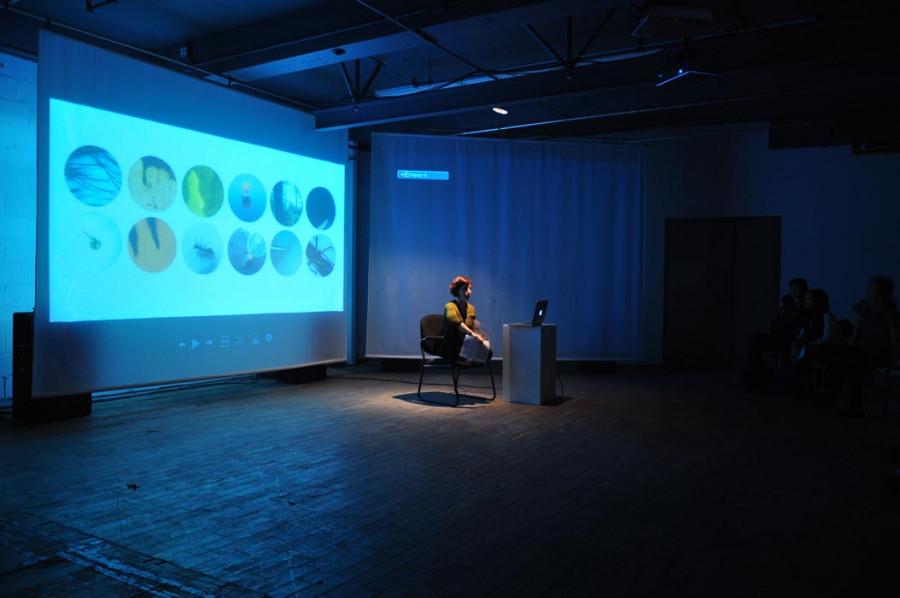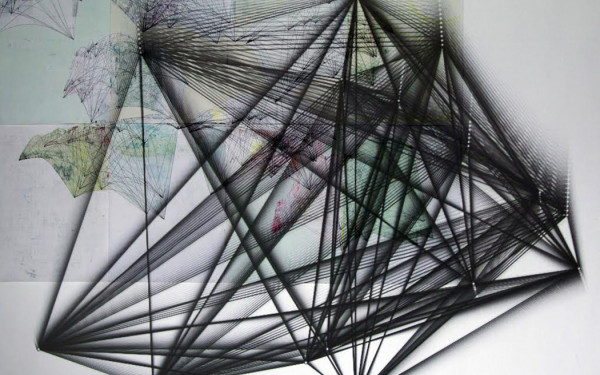Lived Spaces & Fragmented Voices
Zohar Kfir’s Multimedia Work Explores Collective Memory
“Art is a futile act of generosity,” said the famous existentialist Jean-Paul Sartre, in that the artist cannot guarantee his or her meanings safe passage to the audience.
But perhaps it’s when the viewer is merely given elements to order and designate meaning that the most personal, artistic narrative can take shape.
Tel Aviv-born multimedia artist Zohar Kfir will be adapting her installation PARA site for an exhibit at Eastern Bloc’s Data: Salon III January 11. Kfir developed the project for her MFA thesis at Concordia, which she completed last spring.
“The installation deals with storytelling, and how can it be transferred to the viewer through phenomenology. It’s not about a narrative per se, but more about how people perceive the space,” she said.
Soundtracks emerge with each of the 12 projections involved in the installation, allowing the viewers to seek out the next video to build their own meaning in Kfir’s fractured pictures and sound.
“I work by collecting images, I walk around with a camera all the time,” said Kfir. “For this project I was using a microscope camera, it’s a small USB camera that can magnify everything. There’s footage of a dying ant, and a mosquito drawing blood from my own body. I see PARA site as a collection of mine, an ongoing archive.
“They evoke some notion of memory or displacement, in a way that people can connect to, in a way they’re very emotional.”
The Data: Salon show provides a space for artists to help conceptualize their works-in-progress, as Kfir will do for her other show, Ruins.
This installation applies the themes of fragmented narrative and collective memory to the Nakba, the commemoration of the expulsion of Palestinians from their homes following the 1948 Israeli Declaration of Independence.
She’s been volunteering with B’Tselem and Zochrot, two Israel-based NGOs that work to bring the Palestinian narrative into Israeli-Jewish consciousness. The B’Tselem Camera Distribution Project, launched in 2007, distributing 300 video cameras to Palestinians in the West Bank and Gaza, and collecting the footage every month or so.
It’s a pretty empowering project, giving the Palestinian people a way of exposing abuses of authority. With Ruins, Kfir hopes to increase the visibility of this web-based citizen journalism.
“If the army is coming into people’s houses, or if there is some problem with the settlers, the Palestinians can use the cameras and document it as a self-defense mechanism,” said Kfir.
“Today, everyone has cell phones to shoot video, but especially in Palestine where there’s less technology, sometimes it’s even difficult to find an Internet connection,” she said.
She plans to integrate both of these archives into a larger-scope online interactive map once she selects more footage from B’Tselem and Zochrot during a trip to Israel in March.
“The video installation will be a map of Palestine, a complete map built from sand which people could walk on, [activating videos depending on where they walk], and the illustrations will be on the floor,” said Kfir.
Ruins is a large-scale interactive documentary project with no defined beginning or end, with freedom to navigate through the media given to the viewer.
In experiencing the installation, the audience brings their own interpretation and timing to it, a reflection on the problem of documenting objective history, especially when some groups would rather forget specific events in the last 100 years.
“In a lot of my single-channel work I always work with duration, so this is something that the digital medium allows me to do, to reverse the video, slow it down, more and more layering of elements on them,” said Kfir. “So there is always an unexpected element in my work.
“I work with natural elements and time, so it’s a tricky way to turn them into something else, something surprising.”
PARA site & Ruins / Eastern Bloc (7240 Clark Rd.) / January 11 / 7:00 p.m. – 10:00 p.m. / Free


_600_832_s.png)


_600_375_90_s_c1.jpg)

1web_600_375_90_s_c1.jpg)